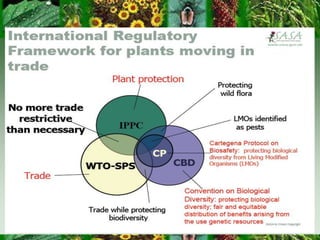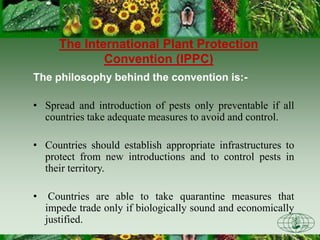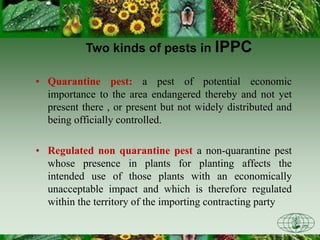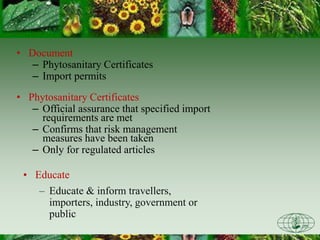Plant Biosecurity develops quarantine policies to protect plant health from exotic pests based on national and international obligations. The International Plant Protection Convention (IPPC) aims to prevent the spread and introduction of plant pests through coordinated action. Pest Risk Analysis (PRA) identifies, assesses, and manages risks posed by quarantine pests to determine appropriate phytosanitary measures. The PRA process involves initiation, pest risk assessment, and pest risk management stages. Risk assessment evaluates the probability of entry, establishment, and spread of pests, as well as potential economic consequences. Risk management identifies, evaluates, and selects options to reduce risks to an acceptable level.












































